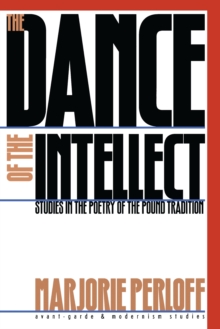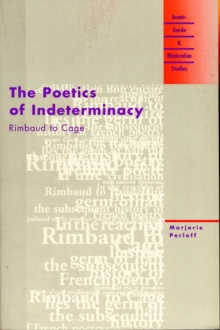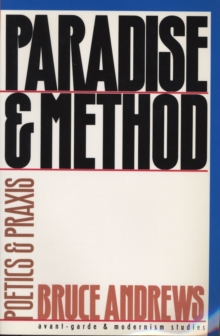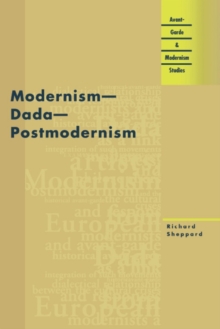
The Janus Face of the German Avant-garde : From Expressionism Toward Postmodernism Paperback / softback
by Rainer Rumold
Part of the Avant-Garde & Modernism Studies series
Paperback / softback
Description
Among the avant-garde of the early twentieth century, the German movement remains one of the least understood in the current avant-garde and modernism debates.
Rainer Rumold fills this gap with a first large-scale reassessment of the heyday and afterlife of German expressionist and Dada productions as a prolonged crisis of literary culture.
Mapping avant-garde activity in Germany in a series of critical constellations from roughly 1918 to the post-World War II period, Rumold divides its history into three phases: the ""revolt"" of contradictory discourses in the teens and twenties; the conservative reversal vs. a radicalized anti-art stance of the avant-garde in exile; and the ""post-avant-garde."" The latter is viewed as a unique step toward the postmodern represented in the late (postfascist) work of the once-radical expressionist Gottfried Benn and that of the neo-avant-gardists Helmut Heissenbuttel and Hans Magnus Enzensberger.
Throughout, Rumold notes a symptomatic oscillation between the avant-garde's wish to abolish ""art"" and the apotheosis of art as a form of redemption - the ""Janus face"" of his title.
In highly original readings of Carl Einstein, Walter Benjamin, Bertold Brecht, George Grosz, and others, he shows us a German avant-garde less opposed to the wholesale destruction of bourgeois tradition than its European counterparts and more committed to finding new ways for artworks to function within the modernist sphere.
A major study of material that should be widely known in the U.S., Rumold's work is essential to an understanding of German politics and culture, as well as modern poetry, fiction, and the visual arts.
Information
-
Available to Order - This title is available to order, with delivery expected within 2 weeks
- Format:Paperback / softback
- Pages:280 pages
- Publisher:Northwestern University Press
- Publication Date:28/02/2002
- Category:
- ISBN:9780810118799
Other Formats
- Hardback from £99.00
Information
-
Available to Order - This title is available to order, with delivery expected within 2 weeks
- Format:Paperback / softback
- Pages:280 pages
- Publisher:Northwestern University Press
- Publication Date:28/02/2002
- Category:
- ISBN:9780810118799










